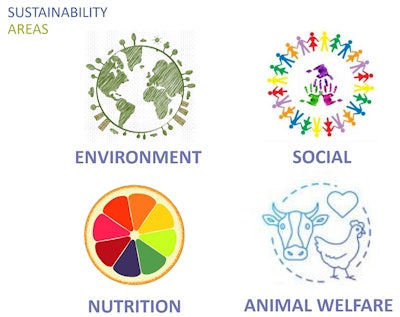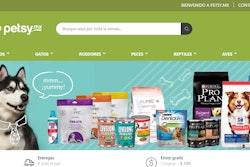
Consumers, including pet owners, are becoming more concerned about and interested in sustainability, and even starting to put their money where their mouths are and shop for consumer goods accordingly.
For example, 85% of U.S. consumers think the average person should be taking steps to reduce their impact on the environment, showed a recent EcoPulse survey conducted by the Shelton Group, a marketing agency focused on sustainability. Further, 41% want to be viewed as someone who’s taking such steps, including buying green products, and “25% can name a brand they’ve purchased — or not purchased — because of the environmental record of the manufacturer,” wrote Suzanne Shelton, CEO of the group, on GreenBiz.com.
Specific to pet owners, such data is more difficult to find, especially outside of packaging, which has to date received most of the attention around sustainability in pet food. Pet-owning consumers do indeed care about sustainable and recyclable packaging: 30% of U.S. pet owners try to avoid pet foods with excess packaging, according to Packaged Facts. Yet they are also starting to care more about the sustainability of pet food itself, which often relates to protein sources.
Do pet owners look for sustainability claims on pet food labels?
A 2017 survey of U.S. pet owners conducted by Packaged Facts showed only 2% of dog and cat owners selected sustainable/eco-friendly formulation as a product claim drawing them to purchase. That’s a low percentage, but it was stacked up against claims such as "Made in the USA" (most popular by far, at 31-32%) and ones stemming from longtime trends like natural and limited ingredient. Other claims related to sustainability drew slightly higher: local sourced and humane/ethically raised, 3-4%; and fair trade, 2-3%.
Pet food companies are responding to this small but growing interest. As of September 2018, products with grass-fed claims (as in, the animals providing the protein in the foods were fed only grass) accounted for a tiny 0.04% of U.S. pet food sales but had increased by 156% over the previous year, according to Nielsen. Meanwhile, pet foods with cage-free or free-range claims totaled only 0.08% of sales but grew 46%.
Ongoing pet food protein research project
As for scientific studies into the sustainability of pet food, particularly protein sources, only a few exist. To remedy that, the Pet Sustainability Coalition (PSC) began a research project in 2018 with Iowa State University looking at four areas regarding pet food and sustainability: environment, social, nutrition and animal welfare. The project is ongoing.
In a webinar on November 19, Nick Sterling, a supply chain consultant to PSC who serves on the research team, provided an overview of findings to date, which are based on a review of existing literature and data. For example, the researchers started with World Wildlife Federation data on the ecological footprints of cats and dogs, then added U.S. Department of Agriculture (USDA) data on factors such as the weight and percentages of meat in typical pet food proteins. This led to a lifecycle assessment of various protein sources, not just by species but also by cuts and grades of meat, such as human grade, byproducts and offal.
As is often claimed with human food, beef sources are the largest contributors to greenhouse gases (GHG) emissions, with human grade beef contributing more than byproducts and offal. Comparatively, poultry was the lowest contributor (with more contributions coming from human grade cuts), followed by pork, fish and sheep/lamb.*
A look at land use contributions was similar, though beef’s role was even more significant; it was also significant regarding water usage but came in second to fish, understandably. The researchers also looked at eutrophication (an excess of nutrients in a body of water, frequently due to runoff from the land) and acidification (a decrease in pH of water); beef and fish, especially from aquaculture, ranked very high in these areas, particularly with human grade products.
The conclusion, at least to date, is that using byproducts vs. human grade protein sources provides a large environmental benefit, Sterling said. He also framed this part of the discussion by pointing out that, while the pet food proteins’ environmental impacts may be relatively smaller than those for human food, they are all part of the same, imbalanced, broken and unsustainable global protein supply system.
Pet food companies can’t outsource risk
The social aspect of sustainability in pet food involves labor practices, such as the use of forced labor or mistreatment of workers, particularly in Asia. Sterling commented that while abuses in fisheries have received the most media attention, it’s overlooked that the same problems are occurring in many other areas of production, including meat processing.
According to documented reports received by USDA, more than 57 common pet food ingredients are sourced from supply chains using child labor, while more than 16 have sources using modern forms of slavery. This isn’t just a matter of social values or risking consumer and media outrage; U.S. legislation is now in place for companies to take action in this area, Sterling said. “You can’t outsource risk,” he added, sharing due diligence items such as ensuring a traceable and transparent supply chain, providing contractually established supplier expectations, and monitoring, evaluating and, if necessary, correcting practices in your supply chain.
Consumers today also care a lot about how all animals in the supply chain are treated – thus the growing interest in humane and animal welfare claims on pet foods. Sterling presented five standards, or freedoms, of animal welfare: freedom from hunger and thirst; discomfort; pain, injury and disease; fear and distress; and freedom to express normal behavior. He characterized these as just the minimum level but acknowledged that they are often difficult for companies to put in place.
Still, it’s no longer an option not to do so, Sterling said. Individual U.S. states are mandating certain livestock production practices, led by California, not surprisingly. One law going into effect in the state in January 2020 places requirements not only on the original producer but also on manufacturers making products using those animals. Investors are increasingly requiring that companies pay attention to this, too: A Business Benchmark for Animal Welfare investment fund, for instance, assesses the animal welfare practices of more than 200 companies.
What about the nutrition?
Finally, and perhaps of most importance to pet food formulators, nutrition is a key component of sustainability, because if a food doesn’t deliver nutritional benefits, it’s essentially wasted. This phase of the research being conducted with Iowa State is still under way, studying the bioavailability, digestibility, ingredient quality and consumption of various protein sources. The current trend and demand for human grade ingredients in pet food, particularly protein, will likely show up in the findings.
While claiming there is no silver bullet to improve sustainability in pet food, Sterling suggested a couple of options, such as whole animal utilization (using all cuts and parts of the animal’s meat). “Non-traditional cuts and products can make up 10-25% of the value of an animal and have a crucial role as a lever of change,” he said. Pet food has traditionally used some of these cuts and could probably use more.
Another option is the use of alternative proteins such as insects, invasive species (think nutria or Asian carp) and cellular-based, cultured products. These are likely to get more attention in the coming years from researchers and pet food companies alike.
*Note: The paragraph about various animal-based protein sources' contributions to greenhouse gases has been revised to correct inaccuracies.


















